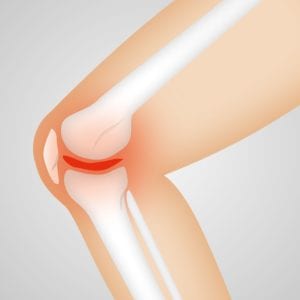How to keep exercising even if you have bad, painful knees…
16/10/2017
If you’ve got bad, painful knees, exercising may be one of the last things on your mind. If this is the way you feel, you are far from being alone. In fact, according to experts, only around 10 per cent of adults who have knee osteoarthritis do the recommended amount of daily exercise.
But, in fact, doing the RIGHT kind and intensity of exercises is actually really good therapy for knee pain. We’re here to show you how you can keep exercising effectively even if your knees are among the worst in the world. Read on!
Avoid high impact activities
Don’t go for a daily run on hard, concreted surfaces, for example. The force applied to your knees will only make the pain worse. Avoid other high-impact activities that involve sudden stops and starts, turns, twisting motions, as well as jumping in the air then landing – sports like football, tennis, basketball, squash are all very hard on your knees.
Go for a walk
Mild walking is a good exercise for those of you with knee pain as it is low impact. Gradually build up your activity levels so that you can do 20 minutes walking each day. And if you have stiff and painful knee joints, remember to also warm up properly!
Another benefit of daily walking is that it will help you lose weight, which puts additional stress on your knees. But if you don’t really like to walk, you can also chose other low impact exercises like swimming, mild aerobics, perhaps skiing.
Avoid exercising on hard surfaces
Hard concrete and the like has virtually ZERO shock absorbing properties, so the impact on your knees will be significant. Opt instead for walking and jogging on grass, dirt paths, etc. Get away from built up areas and out into nature! Another option is to hit the gym and use the treadmills.
Use exercise equipment that is knee-friendly
The stationary bicycles and elliptical machines at the gym enable you to get a perfectly adequate aerobic workout without placing undue stress on the knees. Another reason to hit the gym!
Avoid bending the knees
Don’t do exercises like full squats or leg press routines. These exercises often involve bending your knees more than 90 degrees, which puts extreme strain and pressure on them.
Strengthen surrounding muscles
The quadriceps (at the front of the thighs) and the hamstrings (at the back) are the two main muscle groups that support your knees. To strengthen your quadriceps, do straight leg raises, and to strengthen your hamstrings, try walking backward.
Warm up and stretch before you exercise
If your muscles are warm and flexible when you get around to exercising they (and your knee joints) won’t be as easily injured. Take time out to stretch your quadriceps and hamstrings before you start exercising. In a similar vein, slowly and gradually build up your activity levels once you get back into an exercise routine. Which brings us to..
Be sure not to overdo it!
When your muscles feel fatigued, they can’t absorb the same amount of shock, which in turn places additional stress on your knees. When you start exercising again after a period of injury, take things slowly at first and only gradually build up your activity levels. Also try to mix up your exercises so that you don’t suffer injuries of overuse. For example, alternate between swimming and walking.
Knee and leg health is very important in basketball among any other sport or fitness activity that you might like to do as your workout. And the tips found above are straightforward, common-sense measures that you can take to get your exercise in even if you have bad knees. Yet you would be surprised at how many people overlook them, and whose knees suffer as a result. Take a little bit of extra care and effort, and you will continue to be able to enjoy your favorite physical activities, long into the future, and free of knee and joint pain.